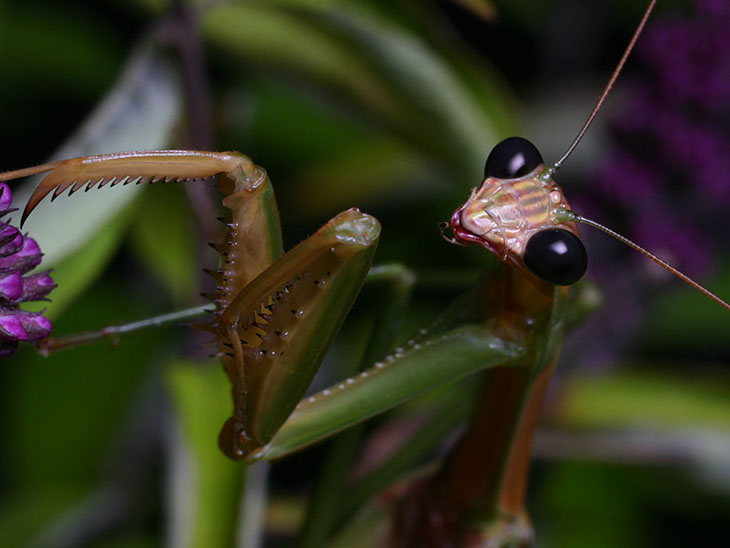I have to admit, I’m really not one for rating things, especially comparatively – top ten lists and all that are not for me. I did it last year, mostly because a prominent blogger would feature any such posts on his own blog as a bit of promotion, so it was blatant opportunism. If you’re here because you found my blog from that link and are still following it, cool, it worked! But my guess is that few people bother to click on such links.
And I usually don’t have “favorites,” at least not anything that lasts very long. Even images that I’m especially pleased with fall out of favor after a while, because I’m too used to seeing them, and so a new favorite will pop up from images that are fresh. This means I’m trying to constantly do something better than I’ve done before, which is a good trait to have, I think (notice that I offer no ruling on whether I’m succeeding or not,) but it also means ranking is out of the question because it changes constantly.
So what we have here, instead, are images that I cropped and sized for blog use sometime in 2013, but somehow never made a post about – I think mostly because I try to rotate out subject matter and I had been doing too many of the same style when these were fresh, and then just moved on. The post title, by the way, also does not attempt to place a value on them, instead using “great” in terms of quantity, and is probably far more similar in usage to “Great Unwashed” or “Great Depression.”

This tableau I just came across at some point in the summer, liking the story that it told, and was lucky enough to get the right lighting angle to bring those wings out sharply. There’s a subtle concord of shapes between the wings and the leaves which I liked. That’s all; nothing deep.
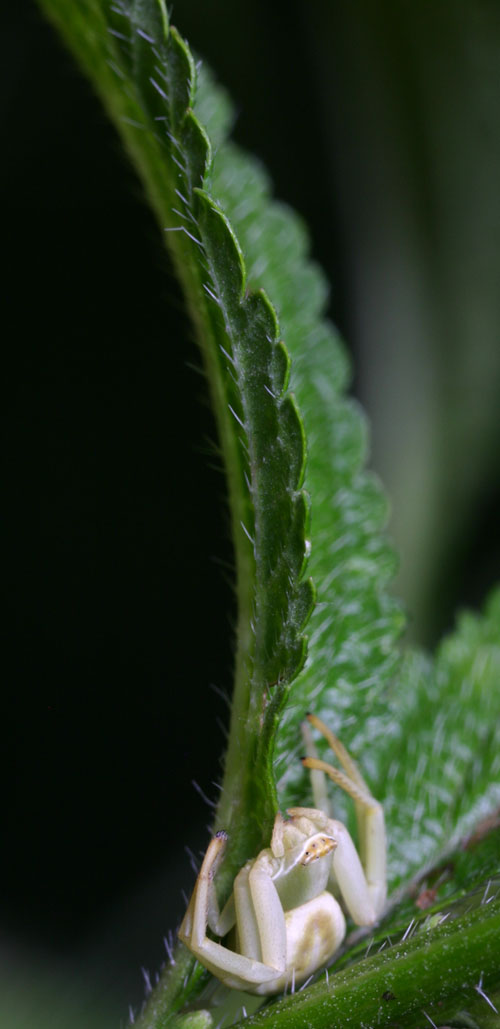 It’s hard to do artistic insect photography, or at least for me to do it, though this is an attempt. Most times I aim for detail images, or behavior, and let’s face it, the market for gallery prints of bugs, especially spiders, is rather limited. But I like to believe the position manages to change the spider from menacing to almost-shy, with the leaf dominating the frame and the spider relegated to a corner, as it were – certainly the “ready-to-pounce” posture is almost obscured by this angle. There’s also enough leaf detail to imply scale a bit better than many of my images, conveying that this really is a small specimen.
It’s hard to do artistic insect photography, or at least for me to do it, though this is an attempt. Most times I aim for detail images, or behavior, and let’s face it, the market for gallery prints of bugs, especially spiders, is rather limited. But I like to believe the position manages to change the spider from menacing to almost-shy, with the leaf dominating the frame and the spider relegated to a corner, as it were – certainly the “ready-to-pounce” posture is almost obscured by this angle. There’s also enough leaf detail to imply scale a bit better than many of my images, conveying that this really is a small specimen.
(Yes, I do know the difference between insects and arachnids and true bugs, and arthropods is the only one that encompasses them all, but it’s still an awkward word, so I’m going ahead with the common usage in the knowledge that no one is confused, even if they’re pedantically offended.)
I’ll take this opportunity, as well as a lot of vertical column space alongside the image, to mention again what position and framing do for an image. It’s not just the simple trait of whether your subject dominates the frame (appearing large and centered) or is minimized among other details, but with any living species, we pay attention to position and implied attitude. A head-on shot of a spider, especially with legs spread to grasp, is about as menacing as you can get, but get outside of this implied ‘target zone’ and suddenly the same posture might seem more protective, almost cowering. Your approach may depend on what you’re trying to show – typical behavior, or something expressive? A nice composition, or identifying characteristics? It never hurts to do a variety of these, to be honest, because you never know what they might eventually be used for.
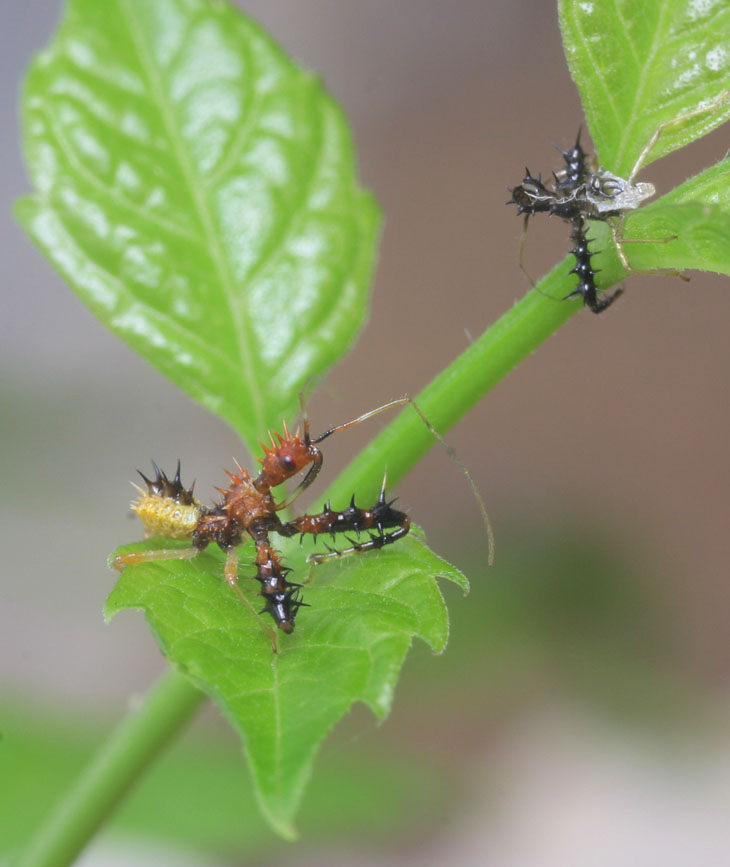
This is the first of three images, all using the same subject to illustrate different things. I had a post planned on molting behavior, and more images of this topic will be coming up, but right now we’ll check out this spiny assassin bug, with its recently discarded chitin nearby. When you start paying attention, molted exoskeletons can be found everywhere, but I think most people simply mistake them for “dead bugs.” For the amateur entomologist, however, they can often be a flag that a newly-emerged specimen is lurking someplace nearby.
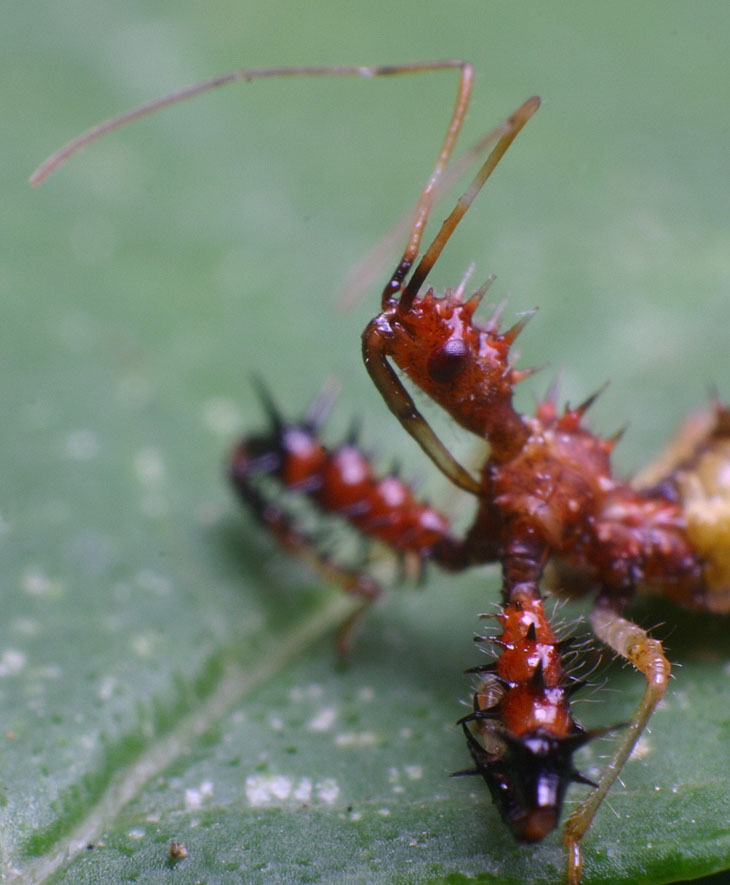
Now we switch lenses and go in close for detail, because we can. Macro work is usually demanding, but a lot of fun at times. Mostly what it enhances is how much of a world there is at a scale we usually pay no attention to. And while we’re on the subject of scale…
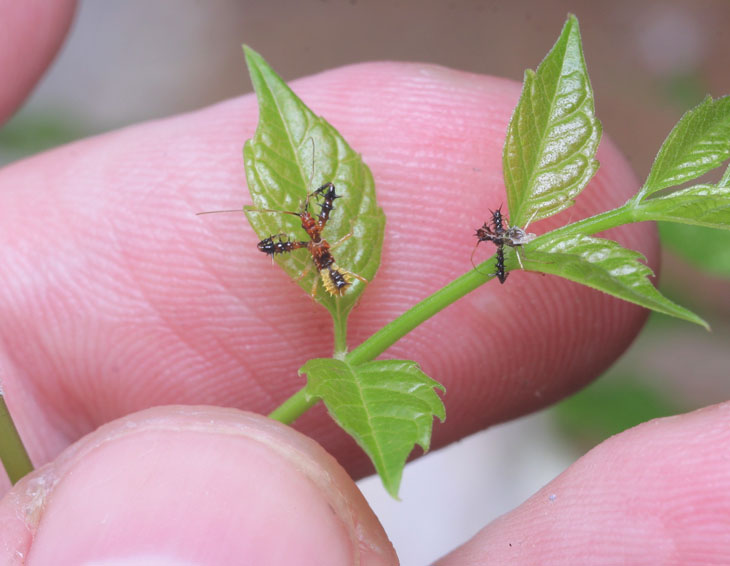
… there’s nothing like getting a really solid impression of just how small we’re talking about. It’s one thing to give distinct measurements, or even include a small ruler of some kind, but neither work half as well as something that immediately conveys the size by familiarity. The one big (?) difference between all of these photos is the leaf in the closeup, which is obviously different – I coaxed my subject onto another leaf because the vine was attached to the wall in a position that prevented a portrait shot with adequate lighting.
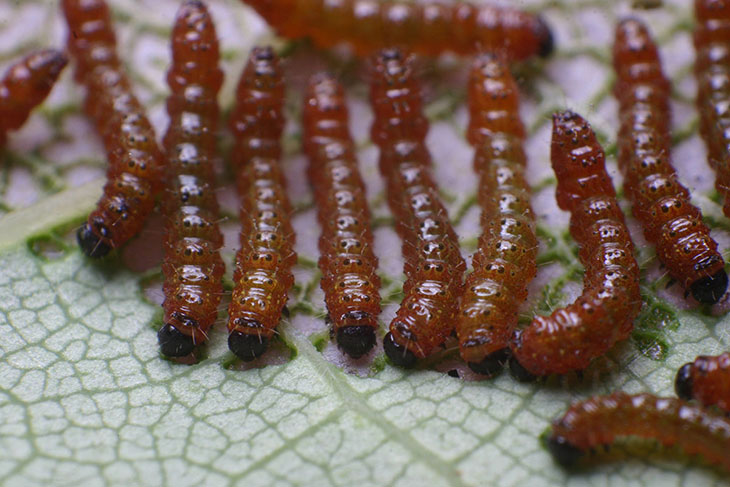
The redbud tree alongside the porch suddenly sported a horde of newly-hatched caterpillars later in the summer, which tackled the leaf like a line-dance, or a carrier FOD walk if that’s an analogy that works better (probably not.) For some reason the redbud drew a lot of attention this year, but I attempted to transplant it late in the fall because it couldn’t remain where it was, and we’ll have to see if it accepted this in the spring.
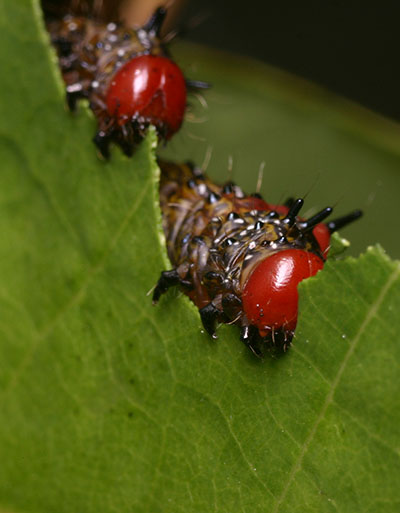 As the caterpillars grew larger, they tackled the leaves in a different manner, making a more noticeable dent in the foliage. Their numbers dwindled, however, likely due to predation but I never witnessed what was responsible; all I know is only a handful made it to chrysalis stage, and I never got to see those hatch out either (this is largely why these images remained in the blog folder unused – I try to build a story when I can.) When you’re this close, by the way, it’s easy to actually watch their progress through the leaf, and after only a few minutes you get the impression they should be stuffed to the gills by now.
As the caterpillars grew larger, they tackled the leaves in a different manner, making a more noticeable dent in the foliage. Their numbers dwindled, however, likely due to predation but I never witnessed what was responsible; all I know is only a handful made it to chrysalis stage, and I never got to see those hatch out either (this is largely why these images remained in the blog folder unused – I try to build a story when I can.) When you’re this close, by the way, it’s easy to actually watch their progress through the leaf, and after only a few minutes you get the impression they should be stuffed to the gills by now.
I finally searched to determine the species for just this post, by the way: these are likely red-humped caterpillar moths, or maybe that should be red-humped caterpillar moth caterpillars, so let’s just go with Schizura concinna. The adult moth stage is pretty unremarkable, in marked contrast to the coloration of the larvae here. Is that actually aposematic coloration, a ‘keepaway’ warning to predators? Yes, indeed – these little guys can emit formic acid defensively, though this is knowledge gained by reading and not experience. Don’t grab them and you won’t gain this experience yourself.
We take a brief break from creepy things for some scenic pics.
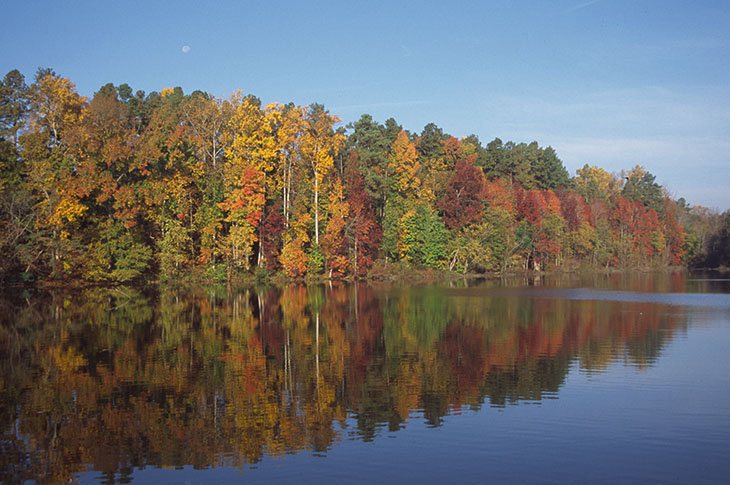
For the post about autumn colors, I had several images lined up to see which fit the best; these two remained behind, forlorn and forgotten.

Obviously I was only going to use one anyway, but which one? Neither was the case, so they get the consolation prize of appearing now, which is really only an illustration of how humans can anthropomorphize anything. These images are not ‘consoled’ by their appearance here, since they’re far too miffed about being passed over the first time.
Obviously, these were taken from the same vantage point, but here you can see what difference the time of day makes; the latter was taken right at sunrise, or at least, right when the sun was high enough to get over the other trees. While the red light is normally a nice touch to many subjects, here it actually reduced the color response that could be obtained later on in the day. But the mist is nice.
Break’s over; back to yuck.

While chasing various other subjects on the butterfly bush, I glanced down and found this little jumping spider surreptitiously watching me from a cluster of leaves. Or maybe it was, anyway – insect vision is often very limited in scope, especially for distances, but jumpers are a notable exception because of the specialized eyes they have for hunting. I played around to get the lighting this good, since there were numerous leaves that could throw shadows, as may be apparent. It makes this image a little misleading though, because the spider really was deep in shadow and very subtle, not at all as it seems here. Still, I liked how it came together.
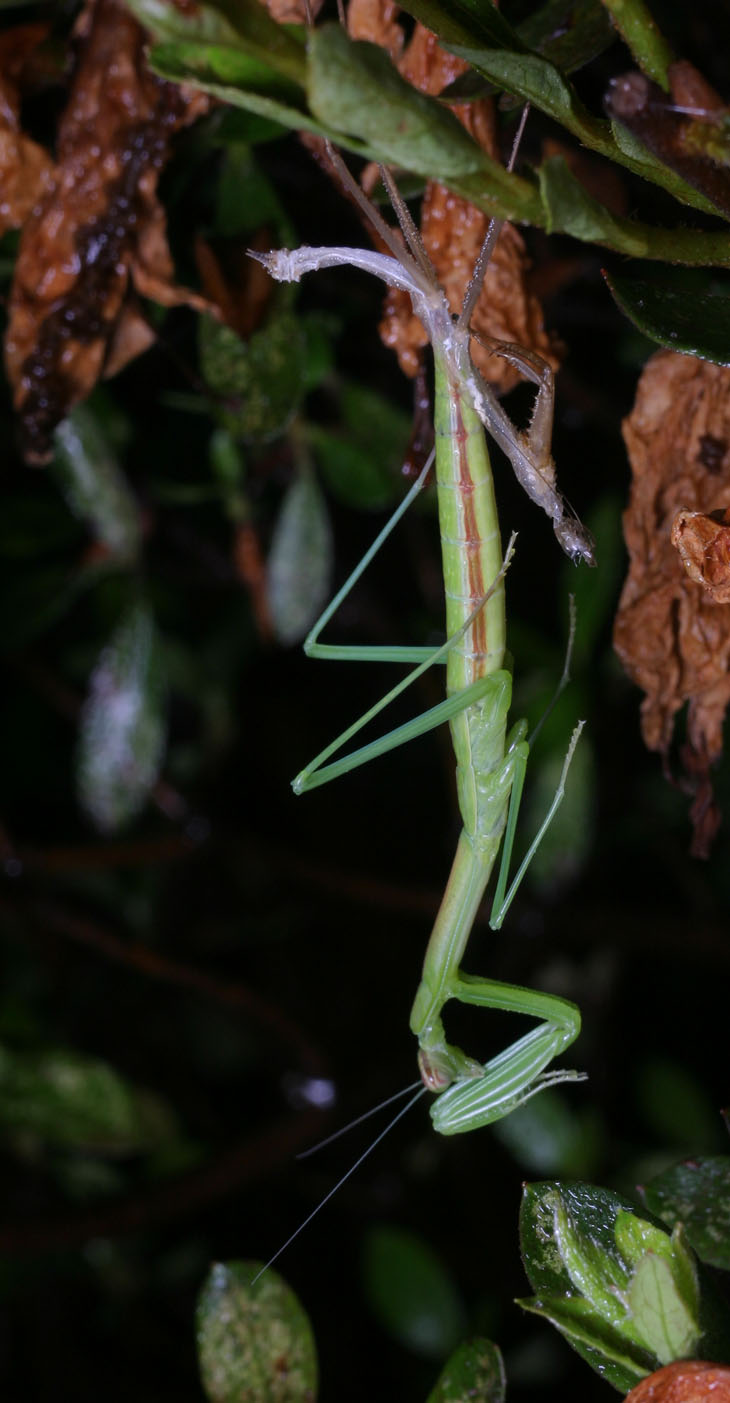
We return the the topic of molting. Here one of my resident mantises hangs suspended from its abdomen, feet not touching anything, still attached to the newly-shed exoskeleton. I got several examples of molting this year, but none in a stage earlier than this, with one exception. I’d love to catch it from the very beginning, but this is perhaps very tricky, since arthropods are vulnerable when molting, and likely will not begin the process if there’s any evidence of danger like, oh I dunno, some huge nature photographer looming overhead with a camera and flash rig. This image, meanwhile, shows a little bit of the disconcerting trait of every molt I’ve seen: the emerged insect is significantly larger than the chitin it just popped out of. I honestly don’t know how this works.
 One of the lynx spiders that I followed all year put on this display one evening, and illustrated a curious trait, which I’ll get to in a minute. Some arachnids, like the fishing spiders, split their exoskeletons horizontally along the sides and flip the top portion out of the way, while the lynx spiders (and mantids) split longitudinally along the ‘spine’ and exit that way. This specimen is also hanging from its abdomen, and both this one and the mantis remained largely motionless for a while, despite the fact that I was obviously nearby; I suppose that it takes time for them to feel confident in the hardness of their new chitin, and in the meantime it is better to be still and not attract attention. But after a while, this one (a female) stretched out and grabbed the network of web strands that only makes a faint appearance in these images, and detached herself from the molted skin.
One of the lynx spiders that I followed all year put on this display one evening, and illustrated a curious trait, which I’ll get to in a minute. Some arachnids, like the fishing spiders, split their exoskeletons horizontally along the sides and flip the top portion out of the way, while the lynx spiders (and mantids) split longitudinally along the ‘spine’ and exit that way. This specimen is also hanging from its abdomen, and both this one and the mantis remained largely motionless for a while, despite the fact that I was obviously nearby; I suppose that it takes time for them to feel confident in the hardness of their new chitin, and in the meantime it is better to be still and not attract attention. But after a while, this one (a female) stretched out and grabbed the network of web strands that only makes a faint appearance in these images, and detached herself from the molted skin.
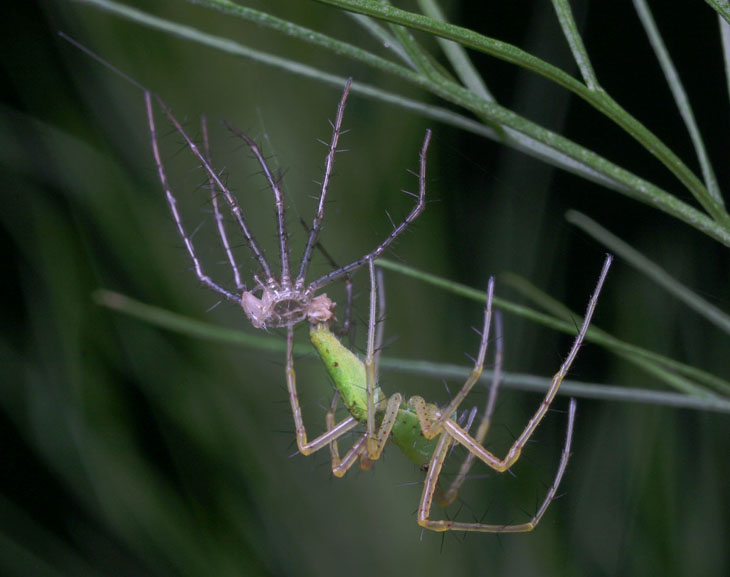
And then she did the curious thing. She went around to each of the legs of the old exoskeleton and worked on the tips by mouth, detaching it from its anchors.

After a minute or three, she had unhooked all of the supports and dropped the chitin out of sight, the only species I’ve known that did this, though many others might and I simply never find the results.
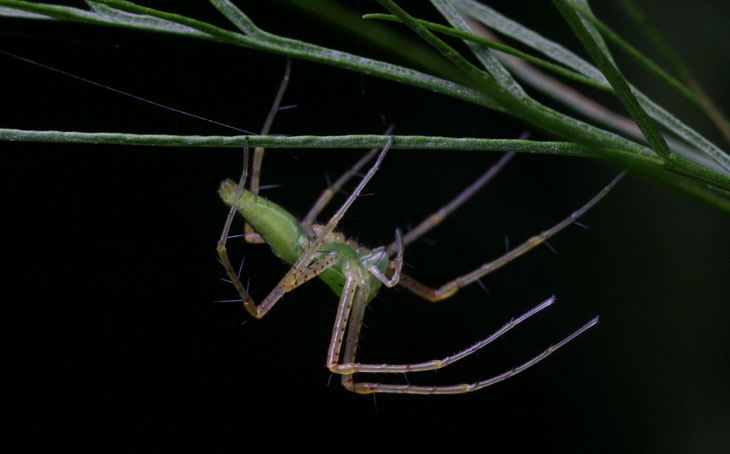
My best guess is that the lynx spiders rely on their camouflage for both protection and hunting, especially a juvenile like this one, and the stark white exoskeleton is too capable of attracting attention. Or maybe it’s just embarrassed by it; last season’s fashions and all that.
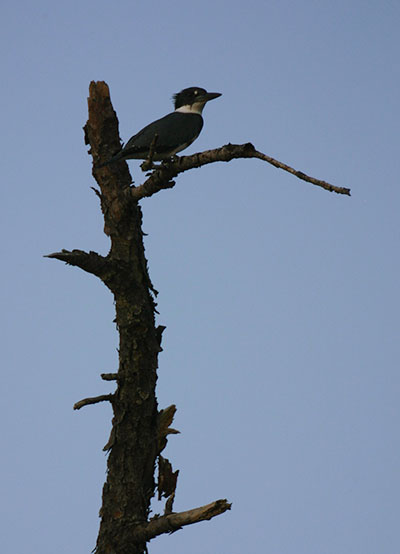 Another break, a belted kingfisher (Megaceryle alcyon) perched conspicuously on a dead snag. This was taken while we were on Jekyll Island, and narrowly missed fitting into that post – I wanted to, but then I have to try and fill up all this space alongside without going “blah, blah, blah, blah,” and sometimes it’s hard to remain topical.
Another break, a belted kingfisher (Megaceryle alcyon) perched conspicuously on a dead snag. This was taken while we were on Jekyll Island, and narrowly missed fitting into that post – I wanted to, but then I have to try and fill up all this space alongside without going “blah, blah, blah, blah,” and sometimes it’s hard to remain topical.
When you’re standing in any public area and pointing a long lens at something, people always look to see what you’re photographing. I’m amazed sometimes at how long it takes people to actually spot my subjects though, like this time; granted, the kingfisher was significantly farther away than this image makes it seem, but c’mon, it’s at the top of the tree and silhouetted against the sky!
I like kingfishers, and see them often, but have yet to get the really snazzy photo of one that I want. They’re shy birds, typically spooking when anyone gets close and leaving with a raucous, chittering cry that invariably tells me I’m too late to set up a shot. Many years ago I was standing in shallows on the edge of a river, moving little while doing long exposures of running water, when one came and perched directly overhead, not four meters away. I knew it was probably futile, but I tried to ever-so-slowly detach the camera from the tripod and aim up at the bird, knowing that any indication of danger would cause it to flee. To my credit, I actually got the camera free, but the bird spooked before I could bring it to my eye; I’ve always suspected it was doing this from pure sadism.
Back to the spiders (speaking of sadism…)
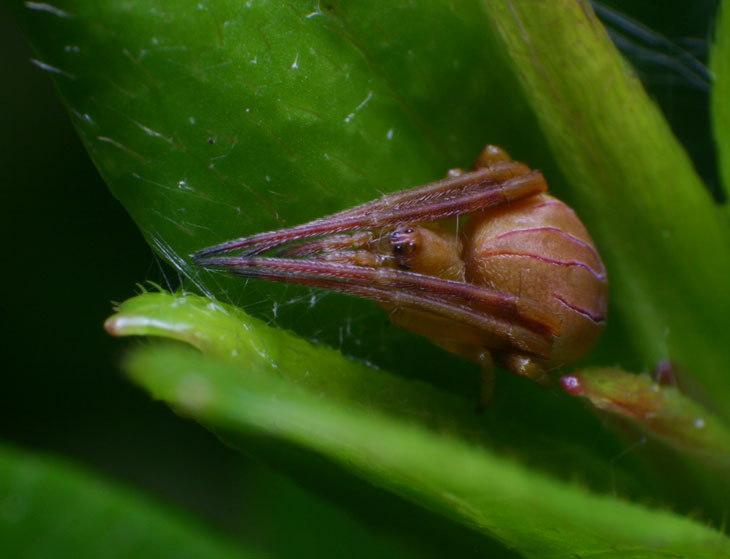
While this looks like a great advertisement for moisturizing cream (okay, maybe not,) those lines on the abdomen are not fissures at all, or indicative of an imminent molt, but mostly coloration. This is a juvenile Acacesia hamata, a type of orb weaver, in defensive posture. It will remain like this most of the day, to emerge at night and create a classic round orb web to catch nocturnal insects. The legs serve as both protection and camouflage, disguising the shape of the body to make it resemble an emerging bud, assisted by the spider’s habit of nestling at the base of leaves. I watched this one for weeks before it vanished, sometimes managing to get images of it in the center of its web at night. It’s the next pic that gives the best impression, however.

Aside from showing the size of the spider, this illustrates a habit that I try to encourage, which is being able to spot that which doesn’t belong. While the spider resembles a bud, azalea bushes do not sprout new leaves in this manner, so the tan shape is something that Doesn’t Belong, and thus deserves more attention. Any form of nature photography benefits from this kind of observation, but macro and arthropod photography especially so.
I was directly, though inadvertently, responsible for this next meal:

One dewy morning, I was setting down my ground pad to photograph this Florinda coccinea spider, and spooked the leafhopper nymph directly into the web. Florindas are sheetweb spiders, making a horizontal fabric of webbing among blades of grass, and often are not seen at all until the dew arrives to highlight the web. The dewdrop adhering to its head is likely obscuring all vision, but this matters little to most web spiders, who detect prey in the web by the vibrations and are capable of finding it by feel. I was lucky to get this angle, because the webs are close to the ground and often obscured at the sides by the supporting grass, but by lying flat on my side and exploiting an opening, I got a clear view. The dewdrop deserves a little closer attention, though.

This is a full-resolution inset of the previous image. Since dewdrops work as lenses but invert the image, the dew-laden sheetweb that the spider hangs from can just be made out at the bottom of the drop. The light patch at the top of the web, however, isn’t showing something under the spider, but is a reflection instead, so not inverted; it’s the softbox panel of the flash I used. And the drop shapes adjacent are dewdrops that the strobe light passed through, projected onto the surface of the drop. The flash is attached to the camera on a bracket and positioned, in this case, off to one side, which kind of shows the gymnastics involved; the lens was right at the very edge of the web, and the flash was actually firing through it (the image has been flipped and cropped from its original sideways orientation.) Another image doesn’t lend much more to the scale, but suffice to say this specimen is no larger than the orb weaver above.
I close with an image that wasn’t sitting in the blog folder, and despite my protests at the beginning of this post, serves as a favorite from the year. I always have one of my photos as a computer desktop background image, and this tends to rotate a few times a year as I select a better one. This one, however, has been up for months and will likely remain for a while; if it doesn’t, well, that’s just an indication that I got something better. Back on the butterfly bush, one of the mantises poses seductively, and the dark eyes indicate that this was taken at night. To the best of my knowledge, this is the one that produced the only egg sac that I know of, but either way, I like the shot – lovely detail from the face and foreleg, nice color throughout. I’ll be sure to show it to her kids when they arrive.
